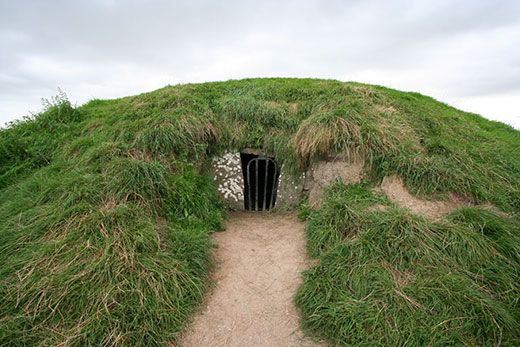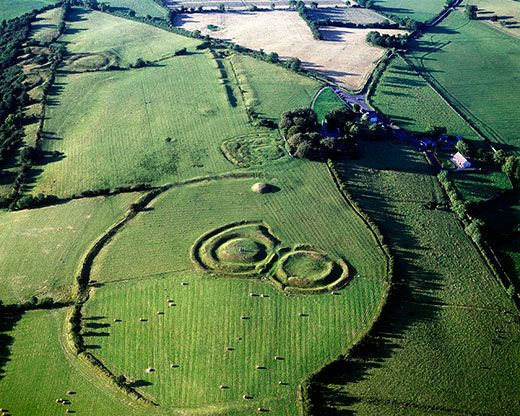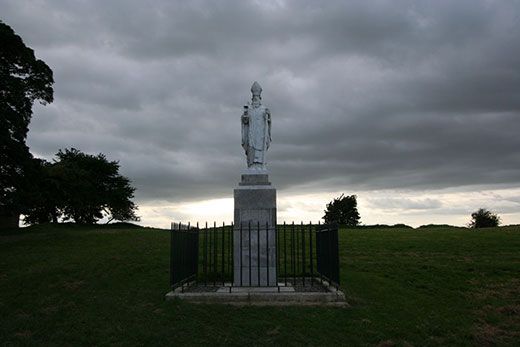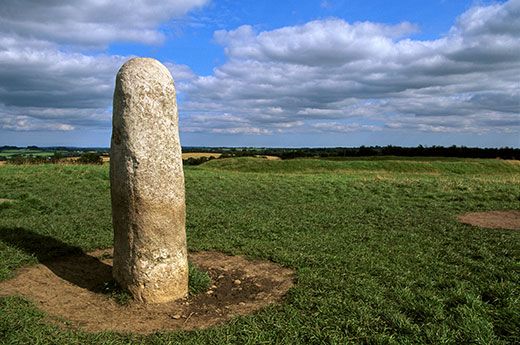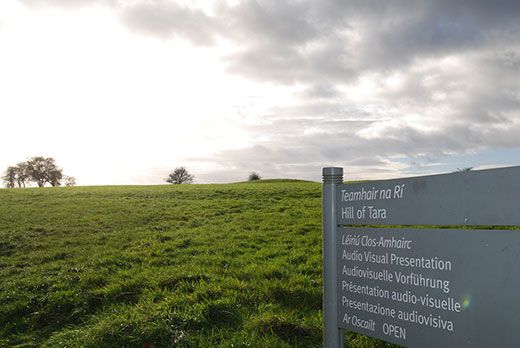Ireland’s Endangered Cultural Site
A new tollway threatens the archaeologically rich Hill of Tara that is the spiritual heart of the country
/https://tf-cmsv2-smithsonianmag-media.s3.amazonaws.com/filer/The-Hill-of-Tara-Ireland-631.jpg)
"The harp that once through Tara's halls
The soul of music shed
Now hangs as mute on Tara's walls
As if that soul were fled."
The words of 19th-century Irish poet Thomas Moore still ring true, and the only music you're likely to hear around Tara nowadays is the clang of construction equipment. Several hundred acres of gentle green fields, marked by some lumps and bumps, cover this patch of County Meath in northeast Ireland. A nice place to lie down and watch the clouds scud by, perhaps, but is it any more remarkable than the rest of Ireland's lovely landscape?
Cinnte, to use an Irish expression of certitude. The archaeologically rich complex on and around the Hill of Tara is seen by many as the spiritual and historic heart of Ireland. It was the venue for rituals, battles and burials dating back to 4000 B.C. More than 100 kings were crowned at Tara, and St. Patrick is said to have stopped there to seek royal permission before spreading his message of Christianity.
In more recent history, the hill was the site of Daniel "the Liberator" O'Connell's 1843 "monster meeting," a massive political demonstration that rallied some 750,000 people to the cause of repudiating the country's union with Britain. Thousands of people still gather on its crest on midsummer's eve, both for the panoramic view and what one visitor calls "the sense you get there of being close to something holy."
"Tara is a part of the Irish psyche," says George Eogan, a retired Dublin archaeologist who led excavations near the hill in the 1960s. "Irish people, they know of Tara from their very early days. It's in schoolbooks and stories, even in primary school."
But Irish history now risks being consumed by the Celtic Tiger—the nickname given to Ireland's phenomenal economic expansion for more than a decade. Inevitably, a thriving economy brought demands for an expanded infrastructure. And so, in 2003, the Irish government approved construction of a new four-lane tollway, the M3, to cut through the Tara complex. Construction began in 2005, and despite a storm of public protest, the project appears unstoppable.
"When it was proposed in 2000, most people nationally had no idea what was happening. And I think everyone trusted the government not to pick a route that was so damaging," says Vincent Salafia, a lawyer from nearby County Wicklow who founded the anti-M3 group TaraWatch in 2005. "There's flat land all around. We still can't quite figure out why they insisted on going so close to Tara."
Proponents of the M3 argue that the highway will improve life for tens of thousands of commuters who live northwest of Dublin and often spend hours each day creeping along traffic-clogged, two-lane roads into the capital city, about 30 miles away from Tara. Other proposed routes for that section of the M3 would have disturbed a greater number of private homes and farms. Proponents also note that the new road will be almost a mile away from the actual Hill of Tara, a 510-foot-high knoll.
"If it doesn't go through the hill, then it's not damaging the site? That is the greatest bit of nonsense that I've ever heard," counters Eogan. "The Hill of Tara is only the core area of a much larger archaeological and cultural landscape."
Preservationists particularly worry that the M3 will slice between the Hill of Tara and Rath Lugh, an ancient earthen fort about two miles northeast thought to have been used to defend the hill. A smaller road already divides the two sites, but the M3 will run much closer to Rath Lugh, even removing part of the promontory it sits on. "If this development goes ahead, Rath Lugh will merely overlook, from a distance of 100 meters, a motorway—which would be a rather ignominious end for a once proud and important monument," a trio of archaeologists warned in a 2004 publication.
Much of the recent controversy has focused on the 38 new archaeological sites that construction teams have unearthed along the section of motorway closest to Tara since the project began. The discoveries represent centuries of human activity, including prehistoric settlements, Bronze Age burial mounds, a possible medieval charcoal manufacturing kiln and the remains of a 19th-century post office. At the time, the discoveries barely caused a hiccup—the artifacts were removed, and once the sites had been "preserved by record" in notes and photographs, they were destroyed. Ireland's National Roads Authority has pledged that any artifacts will eventually be deposited in the National Museum of Ireland.
While that approach may be legally permissible, that doesn't make it right, says Salafia, who examined one of the exposed trenches at a site just north of Tara. "You could see a child's body where [construction teams] had actually cut off the nose and toes, and also shaved off the top of a cremation urn, leaving the ashes exposed," he says. Eogan calls it "an act of sheer vandalism."
The M3 is scheduled for completion in 2010, though the global recession may delay it. In the meantime, Tara is attracting increased international attention, and is under consideration to become a Unesco World Heritage Site.
"Most of the endangered sites around the world are suffering due to neglect and climate change," Salafia says. "But this is an act of assault—premeditated assault, if you will—by the very people who are given the job of taking care of it."
Planning Your Next Trip?
Explore great travel deals
Smithsonian magazine participates in affiliate link advertising programs. If you purchase an item through these links, we receive a commission.
